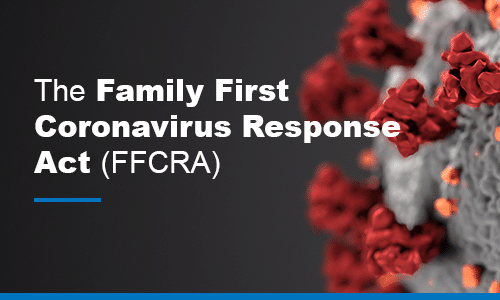Congress passed the Families First Coronavirus Relief Act (FFCRA) to soften the financial impact of nationwide lockdowns. One notable benefit of this program is government-backed sick leave for employees. Self-employed workers and freelancers can also tap into this program by claiming FFCRA tax credits. However, you must meet specific criteria to qualify for these benefits or you run the risk of landing in hot water with the IRS.
FFCRA tax credits can result in significant tax savings, so it’s worth claiming if you can. Here’s everything you need to know about coronavirus sick leave tax credits for self-employed workers.
What is the Families First Coronavirus Relief Act?
Congress enacted the Families First Coronavirus Relief Act (FFCRA) in the early days of the U.S. COVID-19 pandemic to support businesses and workers.
The program reimburses employers for paid sick leave expenses with equivalent tax credits. Self-employed individuals can also access these tax credits, but only if they qualify for sick leave.
You don’t have to test positive for coronavirus to claim these benefits. However, you must meet certain prerequisites to qualify for benefits.
FFCRA Benefits
FFCRA provides a wide array of benefits for small businesses with fewer than 500 employees. Freelancers and self-employed workers also qualify for FFCRA tax credits. Here’s a breakdown of the program’s most valuable benefits.
Caregiver Benefit
The caregiver benefit provides up to two weeks of two-thirds pay for employees caring for an individual subject to quarantine. This credit has a ceiling of $200 per day for up to two weeks, so the maximum credit you can claim is $2,000.
This benefit also applies to individuals caring for children whose school or daycare was closed due to COVID-19.
Coronavirus Sick Leave Credit
Self-employed workers can claim sick leave credits if they’re unable to work because they’re quarantined, experiencing COVID-19 symptoms, or seeking a medical diagnosis.
Qualified individuals can receive their regular daily rate or applicable minimum wage, whichever is higher. Benefits top out at $511 per day over two weeks for a maximum benefit of $5,110.
Quarantine Credits
Workers can also claim FFCRA credits if federal, state, or local quarantine orders prevented them from working. Workers who were ordered to self-quarantine by a qualified health provider also qualify.
You can only claim this tax credit if the quarantine order prevented you from working or working remotely. If you worked from home while under quarantine, you cannot claim this credit.
Expanded Family and Medical Leave
If you’re caring for school-age children who cannot attend school or daycare due to COVID-19 related lockdowns, you can claim credits for up to 10 weeks at two-thirds your regular pay.
However, you only qualify for these credits if you’re unable to work because of your child care duties, and you’ve had your job for at least 30 calendar days. Again, if you’re working remotely, you cannot qualify for this credit because you aren’t, by definition, unable to work.
Do Freelancers and Self-Employed Workers Qualify?
Independent workers can also qualify for FFCRA benefits if they meet the government’s criteria. However, you can only claim these credits if you’re unable to work, so you don’t meet the criteria if you’re working from home.
You can claim the appropriate tax credits for any time between April 1 and December 31, 2020. Remember to keep any evidence relating to your sick leave claim on file so you’re prepared to defend yourself if the IRS asks questions. This includes documentation of doctor’s visits, school closures, employer correspondences, and anything else that can verify your credits.
Also, make sure you include records of your earnings to prove you claimed the appropriate monetary benefit. If you claim the maximum benefit, you should have documentation proving you make $5,110 or more during a typical work week.
Additional FFCRA Requirements
Businesses must have fewer than 500 employees to qualify for FFCRA, which covers most independent contractors and freelancers. You must also prove that you were unable to work or telework for at least one of the following reasons:
- Federal, state, or local quarantine orders prevented you from working.
- A qualified health care provider ordered you to self-quarantine.
- You’re experiencing COVID-19 related symptoms and seeking medical care.
If someone in your household meets any of these prerequisites, you can claim family leave credits if caring for them prevented you from working. You can also take family leave credits if you’re unable to work because you’re caring for school-aged children who cannot attend school or daycare due to COVID-19 related closures.
Again, you cannot qualify for these benefits if you’re working remotely. Working from home disqualifies you from receiving sick leave tax credits, even if you’re legitimately sick.
How to Claim the 2020 FFCRA Tax Credits
You can claim these credits when you file your 1040 form for 2020. The IRS will likely provide more instructions once the 2020 filing deadline gets closer. You can also incorporate these credits into your estimated tax calculations for more cash flow flexibility.
FFCRA Tax Credits and Estimated Taxes
You can reduce your estimated tax payments to reflect these tax credits. The deadline for fourth-quarter payments falls on January 15, 2021, so you still have time to adjust your payments.
Get the Tax Credits You Deserve
This article provides a general introduction to FFCRA, but there’s a lot more to learn about government coronavirus relief programs. Shared Economy Tax helped clients navigate the coronavirus crisis from day one, so our team knows all about government relief programs. Sign up for a sitdown with one of our tax experts to get started today. You can also sign up for our newsletter using the form below for more valuable business tax tips.
